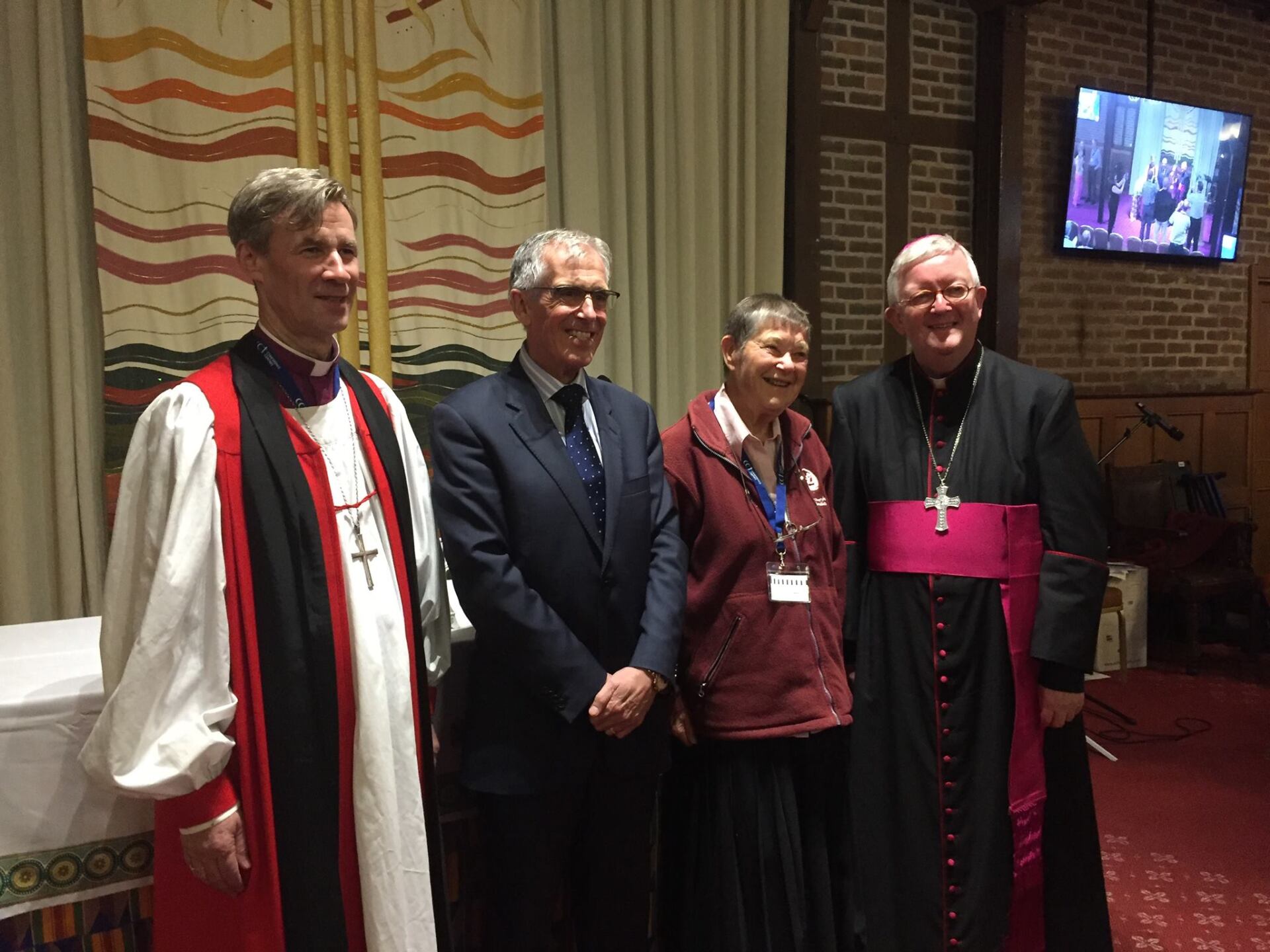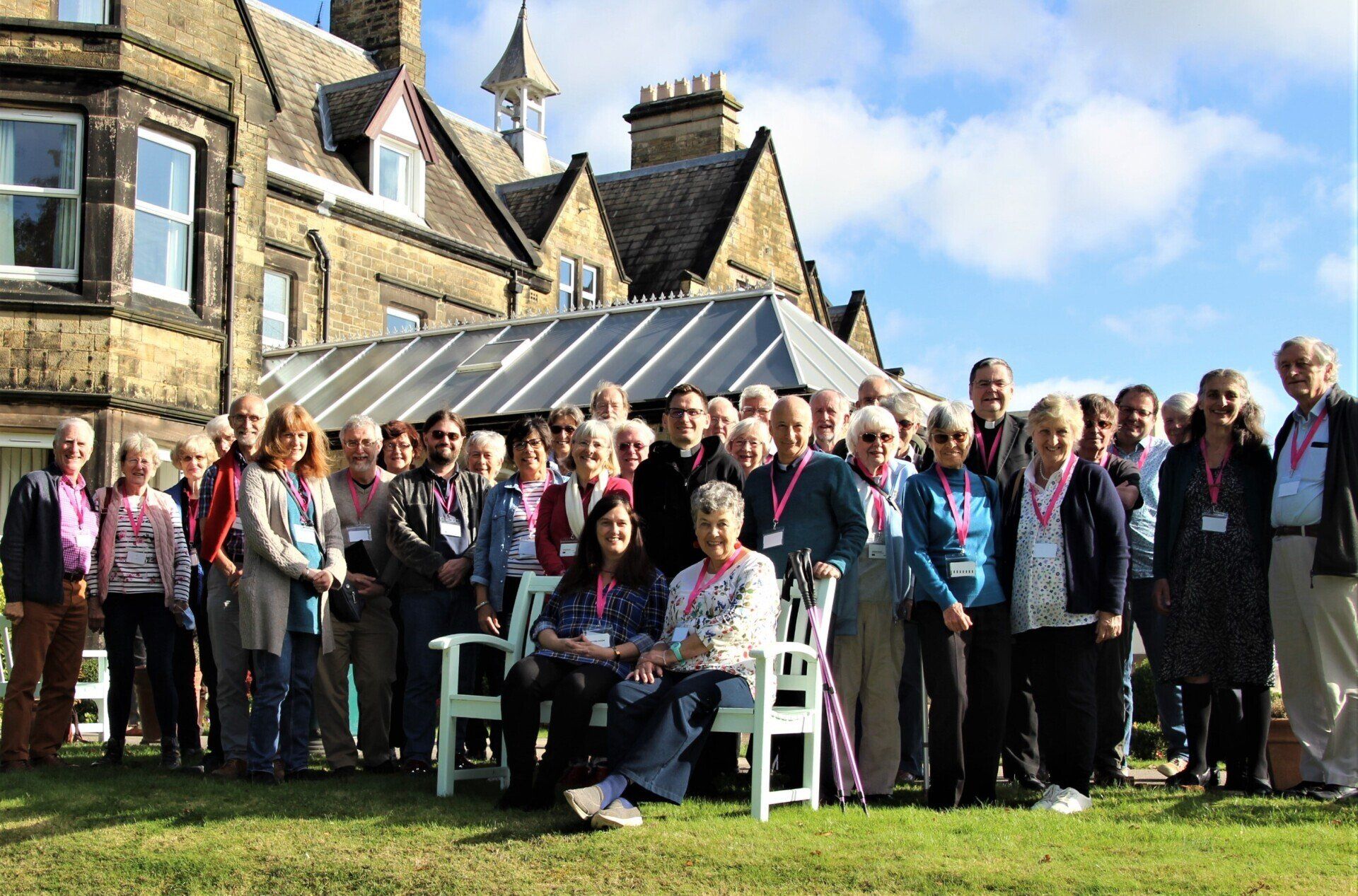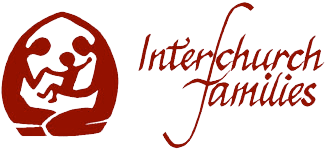OUR HISTORY
The beginning of the Association of Interchurch Families can be traced back to the difficulties experienced by a couple who tried, unsuccessfully, to involve both their churches in the baptism of their baby. The mother was Catholic, the father a Protestant, and eventually the baby was baptised in the Catholic Church. The father was so upset by this outcome that he and his wife didn’t speak to each other for a week and the protestant minister suggested that they contact Ruth and Martin Reardon, Ruth a Roman Catholic, Martin an Anglican priest.
In England we didn’t get going as early as the French. We date the beginning of the Association of Interchurch Families from 1968 – our first national meeting. Very soon there followed local groupings of members, but we started off on a national basis.
It happened because of a baptism problem. A couple had tried to involve both their churches in the baptism of their baby without success. The mother was Catholic; the father Congregational (that is, Protestant rather than Anglican). Eventually the baby was baptised in the Catholic Church, and the father felt totally bereft of his child; he was so upset that the couple had not spoken to each other for a week. His Congregational minister said, “Why don’t you contact the Reardons, they’re a mixed couple like you?”
Who were the Reardons? Well, Martin was an Anglican priest, I am Roman Catholic. We wouldn’t have met one another if it were not for the Second Vatican Council. In 1960 Martin was the second young Anglican priest sent to study for a year at the Catholic University of Louvain to find out what was the theological thinking behind the calling of the Council. That couldn’t be done in England in those days – Catholics and Anglicans didn’t speak to one another on religious topics! – and there was a historic connection between the Church of England and the Catholic Church in Belgium because of the Malines Conversations in the 1920s. I was studying in Louvain, and that was how Martin and I met. A mixed marriage was not easy in those days, and we would not have married if Cardinal Suenens had not given us a dispensation without requiring the usual promise that all our children would be brought up as Roman Catholics. We married in Belgium in a ceremony in which Catholic and Anglican priests both took part – this would have been impossible in England in 1964.
Martin had an ecumenical post as Secretary of a large city Council of Churches in the north of England, and was a member of the Church of England’s Council that dealt with relations with Roman Catholics. I became a member of the national Roman Catholic Ecumenical Commission that was formed in the wake of the Council. We were thus well-placed to study post-conciliar developments on mixed marriages in the 1960s and to try to make them known in England.
Well, the Congregational father contacted us, as advised by his minister, and Martin was able to visit the couple. They were so pleased to know that we knew a few other mixed couples. Why don’t we get together, they asked? So a small meeting took place in our home in early 1968, and from that came our first national meeting at a Dominican conference centre in November 1968. By that time we had roped in a Jesuit priest to help us – Fr John Coventry, who was the Secretary of the Catholic Ecumenical Commission for England and Wales. I remember his big smile on the first night of our meeting: ‘They’re so pleased to meet one another’, he said. ‘We must do this again.’ And we did, with an annual conference that still continues. Fr John only missed one of those meetings until he died in 1997, and Martin was at every one until his death in 2005.
Meeting one another has been so important. In the early days we were a small group huddled together for mutual support. Many of us had felt isolated. Parish priests said: ‘I’ve never met a couple like you before’. We seemed to be so unusual in being two practising Christians who wanted to conserve our links as a couple with both the churches that had nurtured us. It was a great relief to find there were others like us! In later days we could become a support network for couples who did not necessarily want to join an Association, but who needed the kind of accurate information we could give, about getting married, baptisms and sharing communion. This was particularly true in the 1990s, when we acquired an office in London.
The first conference in 1968 threw up the major questions that occupied us for the first few years. We had come together because of a baptism question. We had a couple who had married in an Anglican church because they were unwilling to make the promise about the children’s upbringing then required by the Catholic Church, so they were not married in the eyes of the latter. But we had one couple who had been married in Italy that summer, and the English Anglican spouse had been allowed to receive communion at the wedding alongside his Italian Catholic bride. This news left us amazed – and hopeful!
Also in 1968 we coined the term ‘interchurch marriage’, to distinguish marriages where both partners were practising from the ‘mixed marriages’ in which one or both partners were not committed to their respective churches. We were, too, very concerned to promote Christian unity, and to bring our churches together so far as we could. Thus the Association, besides being a support network, also became a voice in the churches. We tried to explain the kind of pastoral care we needed for the sake of our marriages, and also how we thought the churches could come together more readily if they worked at their unity in the way married couples have to work at theirs. Many couples became involved in their local Councils of Churches (just beginning to admit Roman Catholics to membership in the late 1960s). Later, after the visit of Pope John Paul II to England in 1982, the Association was much involved in the process that led in 1990 to the formation of a new ecumenical instrument called Churches Together in England. This included the Roman Catholic Church in its membership, unlike the former British Council of Churches.
Our experience as families has been that of ‘Churches Together’ on a very small scale: two churches (in the sense of local communities and also denominations) within our one domestic church. From 1970 the promise about the upbringing of children in the Roman Catholic Church no longer had to be made by both partners, and the undertaking to be given by the Catholic was not an absolute one. This opened the way for couples to commit themselves to joint upbringing in both churches, starting with a shared celebration of baptism, and admission to communion in both churches when the time for First Communion came. What had seemed impossible actually happened in a number of cases, in spite of all the heartache and pain along the way. Growing children began to insist that they wanted their confirmation or affirmation of faith to take place in the context of both churches, and sometimes they have been able to do so..
Eucharistic sharing in England for interchurch families has been more difficult than in continental Europe, partly because the Church of England is in many ways so near to the Roman Catholic Church, and so seems more of a threat than Protestant churches elsewhere. There has been a bitter history of mutual persecution, and the healing of memories is still in process. The official application by the British and Irish Catholic Bishops of the 1993 Ecumenical Directory from Rome, One Bread One Body, was made in 1998. It was positive in that it admitted for the first time that eucharistic sharing was sometimes possible for interchurch families, but negative in trying to restrict it to very few occasions. The practice is happily not always so restrictive. Above all, what we have tried to do is to give sacramental expression to the unity we experience daily in our small ‘domestic churches’, and to make that unity somehow fruitful for the life of our wider church communities as they walk together on the ecumenical path.


